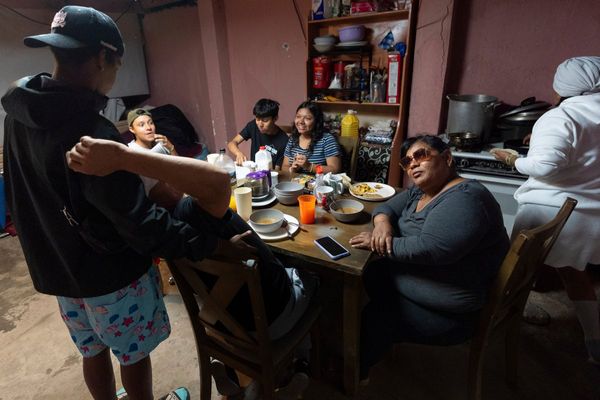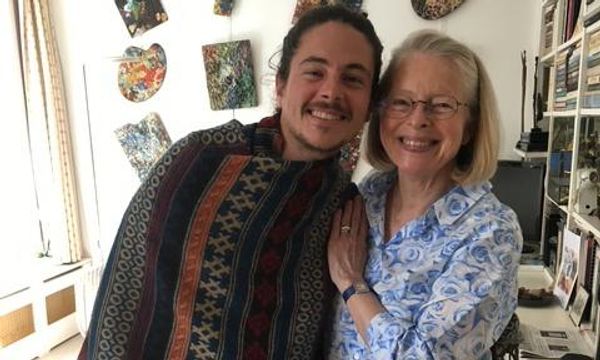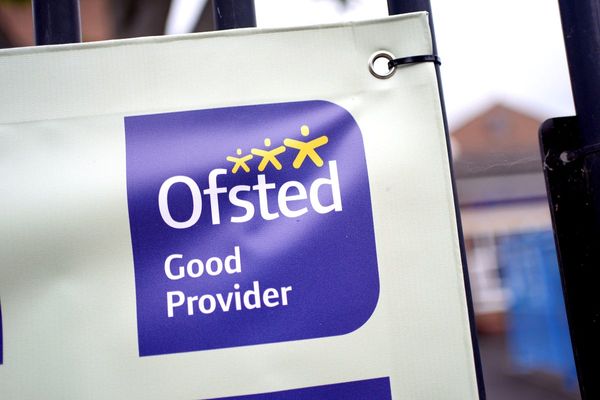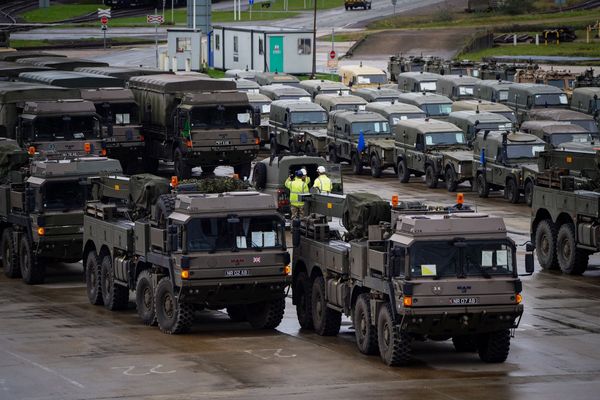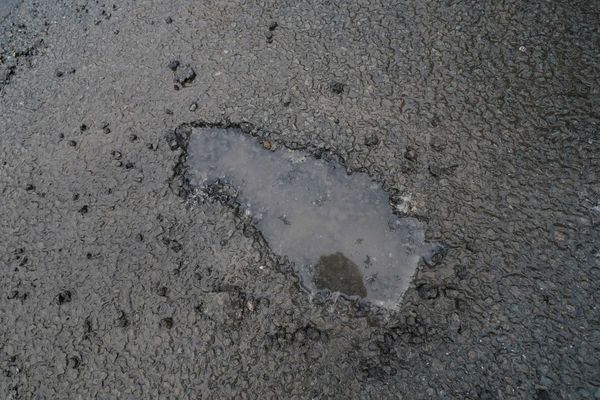
As students across India logged in to their virtual classrooms last month, many of them no doubt felt their prayers had been answered.
The Central Board of Secondary Education (CBSE), India’s largest education board, announced in July that it had cut this year’s syllabus by 30 percent. It hopes that the move will relieve stressed-out students who have lost valuable hours in the classroom to COVID-19 and are trying to adapt to online learning.
But not everyone is pleased. The move has fueled controversy over the fact that government-run schools no longer have to teach chapters on democratic rights, secularism, federalism, and citizenship, among other topics. These concepts lie at the core of the Indian Constitution but have at times come into conflict with the Hindu-majoritarian ideology of the ruling right-wing Bharatiya Janata Party (BJP). The party’s well-established interest in using the education system to spread its own unitary brand of Indian identity has further raised concerns that the omissions are politically motivated.
After a victory in last year’s general elections, Prime Minister Narendra Modi’s BJP began rolling out a set of controversial citizenship policies that critics have called unconstitutional and anti-Muslim and that have been condemned for promoting an ethnoreligious idea of India. The country has since witnessed a series of large-scale national protests against the measures, including the Citizenship Amendment Act—a law designed to aid refugees from neighboring countries but which excludes Muslims—and a new National Register of Citizens. When combined, the two measures could end up disenfranchising large numbers of India’s Muslim population. (That’s the point, Home Minister Amit Shah, has admitted.) The protests were the largest public challenge to Modi’s rule since he first came to power in 2014.
When chapters like “Popular Struggles and Movements” and “Democracy and Diversity” were removed from the Class 10 political science syllabus, stakeholders and opposition groups were quick to frame the cuts as being in line with the other steps for which Modi has been criticized. The move advances the vision of an “exclusivist, theocratic, intolerant, fascistic nation,” Sitaram Yechury, the leader of Communist Party of India (Marxist), wrote on Facebook in July. His party later called for the cuts to be rescinded, saying they hurt “secular democratic India’s future.”
The Education Ministry has denied any political motives behind the move, which it said was backed by a consensus of policymakers. It also issued a clarification on July 8 calling the cuts a “one-time measure only.”
For practitioners, though, it is hard to separate the syllabus cuts from the current political climate. “It’s clear that this was a very selective exercise,” Anita Rampal, a professor and former dean of the education department at Delhi University, told me in July. “The deleted chapters relate directly to policies that are currently being questioned in the public sphere—and that’s important because not many issues usually are. These are topics the government finds inconvenient.”
Adding weight to such interpretations are other activities the government has undertaken during the pandemic. According to Human Rights Watch, New Delhi has stifled dissent and arrested protesters. The government has also come under fire for refusing to release academics and social activists from jail, including the 80-year-old poet Varavara Rao, who was kept in cramped prison conditions on charges of inciting caste-based violence under India’s draconian Unlawful Activities Act. He ended up contracting the coronavirus.
Meanwhile requests from opposition leaders to resume parliament or allow for videoconferencing have fallen on deaf ears. In turn, the Indian National Congress, the main opposition party, has accused the government of trying to avoid parliamentary scrutiny. Add to this a distracted mainstream media with little interest in covering education policy minutiae and educators like Rampal have little to be hopeful about. “It’s a populist move that few people have the time or inclination to question,” she said. “Once deleted, I can’t see these chapters coming back in any meaningful way.”
The Education Ministry maintains that the recent move is in students’ best interests. Before the pandemic, too, ministry officials spoke about the need to “rationalize” the syllabus and unburden students from the lengthy slog. But if that is the goal, the cuts have undermined it. In an op-ed, Krishna Kumar, a former director of the National Council of Education Research and Training (the organization responsible for designing the curriculum), argued that the cuts have left some remaining topics “incomprehensible.” He points out that students will now learn about the constitution without learning about India’s federal structure.
The deleted chapters were also among those that offered relief from the rote learning and factual regurgitation that are endemic to the Indian education system. “These chapters allowed students to raise questions about social justice and engage in critical analysis,” Rampal said. “Removing these chapters sends a clear signal about what they believe is right for children to be learning.”
The CBSE has said teachers can still teach these topics if they wish. But that is unlikely to happen. “Teachers are evaluated on how well their students score in the board exams and are penalized if they finish the syllabus late,” a New Delhi secondary-school teacher told me. “When you’re already under so much pressure, there’s no incentive to be creative or deviate from the highly centralized teaching calendar.” This system has bred a culture of survival and removed any space for teachers to “really think and talk about educating children’s minds,” the teacher said. “It’s why so many great teachers have left.”
Policymakers must know that topics that are not going to be tested in board exams are unlikely to be covered in class, said Pradyumna Jairam, a former CBSE board social sciences teacher and researcher at King’s College London. “That’s why it is crucial to look at which chapters have been deleted and to ask why they don’t want these chapters to be taught,” he added.
Jairam’s answer is that the deleted chapters dealt with uncomfortable periods of Indian history, like the partition of the subcontinent in 1947 and lower-caste struggles for emancipation. The chapter on popular movements, for example, drew a strong parallel between the assertion of Dalit rights and the civil rights movement in 1960s America, he said. “I taught this chapter, so I know how effective it was. It encouraged students to reflect on how privilege still operates in society, as well as on their own privilege, which may have sheltered them from these uncomfortable truths.”
But Jairam’s interpretation begs the question of why the BJP might have a problem with students learning about human rights, democracy, local government, and civil liberties.
The answer lies in the ruling party’s ties to the Rashtriya Swayamsevak Sangh (RSS), a volunteer paramilitary organization, and its deeply embedded Hindutva ideology. “The individualistic values promoted by liberal democracy is anathema to their view of Hindu traditions,” said Christophe Jaffrelot, a political scientist specializing in South Asia. He noted that Shah, Modi’s home minister, “argued that India should not follow the Western notion of human rights. Nor does the RSS allow for any room for elections or public debate within the organization.”
Education reform has long been a priority of the RSS. The organization itself operates a network of schools through its education wing, the Vidya Bharati. It views changing curriculum content in particular as a key component of nation building and erasing foreign elements from India’s Nehruvian teaching methods. When the BJP was last in power in the early 2000s, it appointed RSS members to top education positions and launched a national curriculum framework under the slogan “Indianize, nationalize, and spiritualize.”
The way history textbooks have already been rewritten in BJP-ruled states can provide clues to the kind of agenda the current administration is pursuing. In Rajasthan, for example, the state board removed all mentions of Jawaharlal Nehru, India’s first prime minister and champion of a diverse and secular India, while adding multiple references to V.D. Savarkar, the father of Hindutva ideology. Meanwhile B.R. Ambedkar is labeled as a “Hindu social reformer” despite his later conversion to Buddhism. Critics claim his seminal key role in fighting for Dalit emancipation was also minimized.
Given this background, “it’s actually surprising that central board textbooks were not rewritten sooner,” Jaffrelot said. In 1999, the last time the BJP was in power and when Murli Manohar Joshi was the minister for human resources development, “this was a priority of the party, and they began making changes straight away.”
In that way, there is a feeling among some political observers that the BJP has left its most divisive policies for its second term in power. With the Supreme Court’s independence under question, a brutal crackdown on dissenting voices from academic and civil society, and a feeble opposition, the path has been cleared for the government to pursue its most controversial objectives, starting with the revocation of Kashmir’s special status a year ago and leading, most recently, to reconfiguring textbooks.
“Now is the time for them to do whatever they want, because who can say anything against them?” Jaffrelot said.
